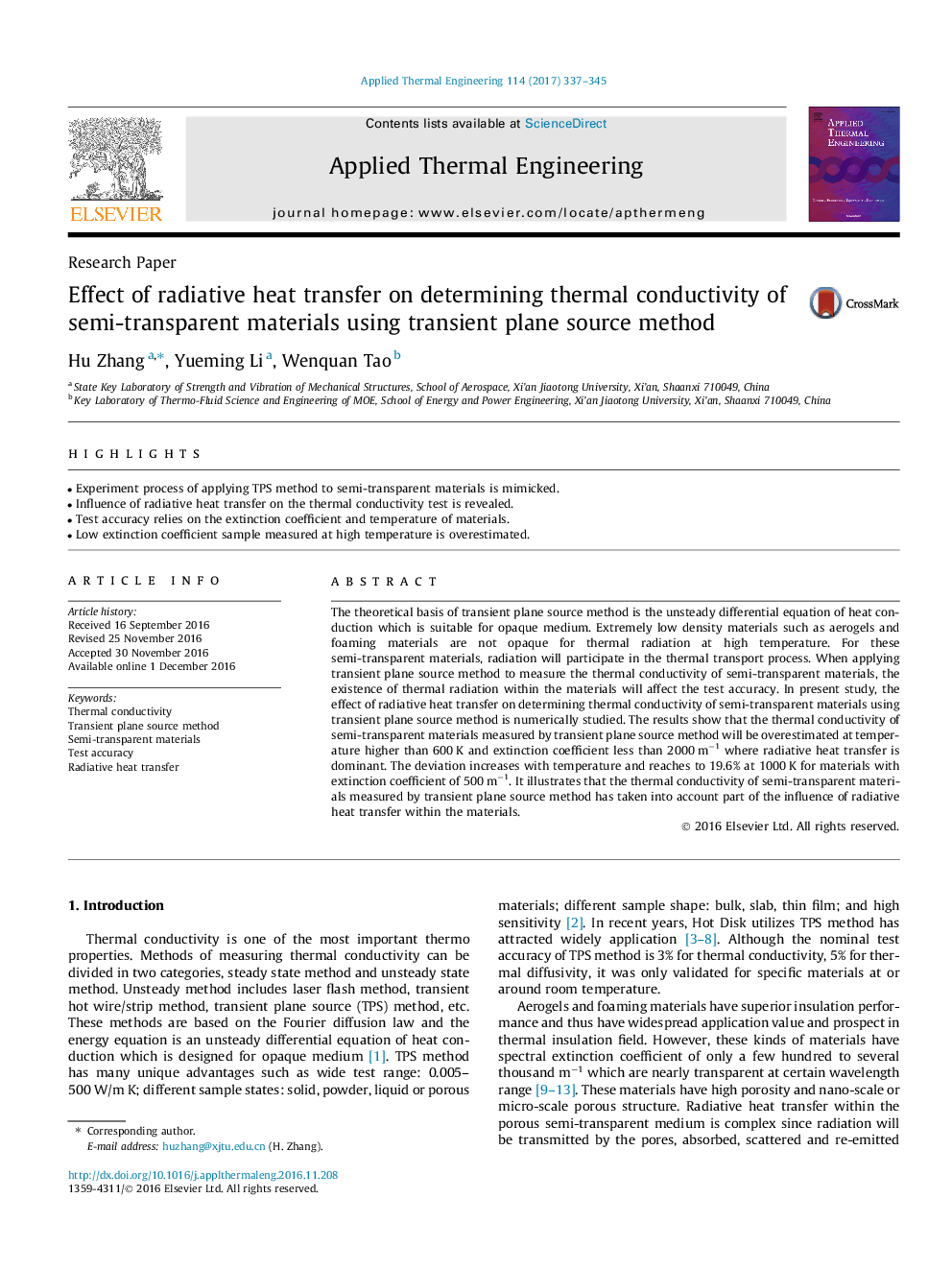| Article ID | Journal | Published Year | Pages | File Type |
|---|---|---|---|---|
| 4991960 | Applied Thermal Engineering | 2017 | 9 Pages |
Abstract
The theoretical basis of transient plane source method is the unsteady differential equation of heat conduction which is suitable for opaque medium. Extremely low density materials such as aerogels and foaming materials are not opaque for thermal radiation at high temperature. For these semi-transparent materials, radiation will participate in the thermal transport process. When applying transient plane source method to measure the thermal conductivity of semi-transparent materials, the existence of thermal radiation within the materials will affect the test accuracy. In present study, the effect of radiative heat transfer on determining thermal conductivity of semi-transparent materials using transient plane source method is numerically studied. The results show that the thermal conductivity of semi-transparent materials measured by transient plane source method will be overestimated at temperature higher than 600Â K and extinction coefficient less than 2000Â mâ1 where radiative heat transfer is dominant. The deviation increases with temperature and reaches to 19.6% at 1000Â K for materials with extinction coefficient of 500Â mâ1. It illustrates that the thermal conductivity of semi-transparent materials measured by transient plane source method has taken into account part of the influence of radiative heat transfer within the materials.
Related Topics
Physical Sciences and Engineering
Chemical Engineering
Fluid Flow and Transfer Processes
Authors
Hu Zhang, Yueming Li, Wenquan Tao,
